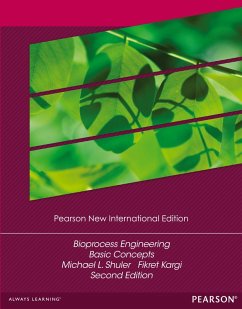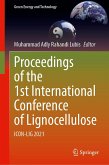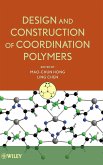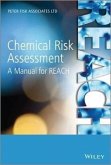Michael Shuler, Michael L. Shuler, Fikret Kargi
Bioprocess Engineering: Pearson New International Edition
Michael Shuler, Michael L. Shuler, Fikret Kargi
Bioprocess Engineering: Pearson New International Edition
- Broschiertes Buch
- Merkliste
- Auf die Merkliste
- Bewerten Bewerten
- Teilen
- Produkt teilen
- Produkterinnerung
- Produkterinnerung
For Senior-level and graduate courses in Biochemical Engineering, and for programs in Agricultural and Biological Engineering or Bioengineering.
This concise yet comprehensive text introduces the essential concepts of bioprocessing internal structure and functions of different types of microorganisms, major metabolic pathways, enzymes, microbial genetics, kinetics and stoichiometry of growth and product information to traditional chemical engineers and those in related disciplines. It explores the engineering principles necessary for bioprocess synthesis and design, and illustrates the…mehr
Andere Kunden interessierten sich auch für
![Chemistry of the Environment, Third Edition (Revised Chemistry of the Environment, Third Edition (Revised]() Thomas SpiroChemistry of the Environment, Third Edition (Revised84,99 €
Thomas SpiroChemistry of the Environment, Third Edition (Revised84,99 €![Proceedings of the 3rd International Conference on Microplastic Pollution in the Mediterranean Sea Proceedings of the 3rd International Conference on Microplastic Pollution in the Mediterranean Sea]() Proceedings of the 3rd International Conference on Microplastic Pollution in the Mediterranean Sea121,99 €
Proceedings of the 3rd International Conference on Microplastic Pollution in the Mediterranean Sea121,99 €![Proceedings of the 1st International Conference of Lignocellulose Proceedings of the 1st International Conference of Lignocellulose]() Proceedings of the 1st International Conference of Lignocellulose151,99 €
Proceedings of the 1st International Conference of Lignocellulose151,99 €![Environmental Consequences of International Conflicts Environmental Consequences of International Conflicts]() Environmental Consequences of International Conflicts151,99 €
Environmental Consequences of International Conflicts151,99 €![Putting Pharmacokinetics and Pharmacodynamics to Work in Drug Discovery Putting Pharmacokinetics and Pharmacodynamics to Work in Drug Discovery]() Emile P ChenPutting Pharmacokinetics and Pharmacodynamics to Work in Drug Discovery188,99 €
Emile P ChenPutting Pharmacokinetics and Pharmacodynamics to Work in Drug Discovery188,99 €![Design and Construction of Coordination Polymers Design and Construction of Coordination Polymers]() MC HongDesign and Construction of Coordination Polymers140,99 €
MC HongDesign and Construction of Coordination Polymers140,99 €![Chemical Risk Assessment Chemical Risk Assessment]() Peter FiskChemical Risk Assessment108,99 €
Peter FiskChemical Risk Assessment108,99 €-
-
-
For Senior-level and graduate courses in Biochemical Engineering, and for programs in Agricultural and Biological Engineering or Bioengineering.
This concise yet comprehensive text introduces the essential concepts of bioprocessing internal structure and functions of different types of microorganisms, major metabolic pathways, enzymes, microbial genetics, kinetics and stoichiometry of growth and product information to traditional chemical engineers and those in related disciplines. It explores the engineering principles necessary for bioprocess synthesis and design, and illustrates the application of these principles to modern biotechnology for production of pharmaceuticals and biologics, solution of environmental problems, production of commodities, and medical applications.
This concise yet comprehensive text introduces the essential concepts of bioprocessing internal structure and functions of different types of microorganisms, major metabolic pathways, enzymes, microbial genetics, kinetics and stoichiometry of growth and product information to traditional chemical engineers and those in related disciplines. It explores the engineering principles necessary for bioprocess synthesis and design, and illustrates the application of these principles to modern biotechnology for production of pharmaceuticals and biologics, solution of environmental problems, production of commodities, and medical applications.
Produktdetails
- Produktdetails
- Verlag: Pearson Education; Pearson
- 2. Aufl. 2024.
- Seitenzahl: 544
- Erscheinungstermin: 4. Juni 2024
- Englisch
- Abmessung: 276mm x 216mm x 30mm
- Gewicht: 1142g
- ISBN-13: 9781292025995
- ISBN-10: 1292025999
- Artikelnr.: 49566569
- Herstellerkennzeichnung
- Pearson
- St.-Martin-Straße 82
- 81541 München
- salesde@pearson.com
- Verlag: Pearson Education; Pearson
- 2. Aufl. 2024.
- Seitenzahl: 544
- Erscheinungstermin: 4. Juni 2024
- Englisch
- Abmessung: 276mm x 216mm x 30mm
- Gewicht: 1142g
- ISBN-13: 9781292025995
- ISBN-10: 1292025999
- Artikelnr.: 49566569
- Herstellerkennzeichnung
- Pearson
- St.-Martin-Straße 82
- 81541 München
- salesde@pearson.com
Preface to the Second Edition.
Preface to the First Edition.
I. INTRODUCTION.
1. What is a Bioprocess Engineer?
Introductory Remarks. Biotechnology and Bioprocess Engineering. Biologists
and Engineers Differ in Their Approach to Research. The Story of
Penicillin: How Biologists and Engineers Work Together. Bioprocesses:
Regulatory Constraints. Suggestions for Further Reading. Problems.
II. THE BASICS OF BIOLOGY: AN ENGINEER'S PERSPECTIVE.
2. An Overview of Biological Basics.
Are All Cells the Same? Cell Construction. Cell Nutrients. Summary.
Suggestions for Further Reading. Problems.
3. Enzymes.
Introduction. How Enzymes Work. Enzyme Kinetics. Immobilized Enzyme
Systems. Large-scale Production of Enzymes. Medical and Industrial
Utilization of Enzymes. Summary. Suggestions for Further Reading. Problems.
4. How Cells Work.
Introduction. The Central Dogma. DNA Replication: Preserving and
Propagating the Cellular Message. Transcription: Sending the Message.
Translation: Message to Product. Metabolic Regulation. How the Cell Senses
Its Extracellular Environment. Summary. Appendix: Examples of Regulation of
Complex Pathways. Suggestions for Further Reading. Problems.
5. Major Metabolic Pathways.
Introduction. Bioenergetics. Glucose Metabolism: Glycolysis and the TCA
Cycle. Respiration. Control Sites in Aerobic Glucose Metabolism. Metabolism
of Nitrogenous Compounds. Nitrogen Fixation. Metabolism of Hydrocarbons.
Overview of Biosynthesis. Overview of Anaerobic Metabolism. Overview of
Autotrophic Metabolism. Summary. Suggestions for Further Reading. Problems.
6. How Cells Grow.
Introduction. Batch Growth. Quantifying Growth Kinetics. How Cells Grow in
Continuous Culture. Summary. Suggestions for Further Reading. Problems.
7. Stoichiometry of Microbial Growth and Product Formation.
Introduction. Some Other Definitions. Stoichiometric Calculations.
Theoretical Predictions of Yield Coefficients. Summary. Suggestions for
Further Reading. Problems.
8. How Cellular Information is Altered.
Introduction. Evolving Desirable Biochemical Activities through Mutation
and Selection. Natural Mechanisms for Gene Transfer and Rearrangement.
Genetically Engineering Cells. Genomics. Summary. Suggestions for Further
Reading. Problems.
III. ENGINEERING PRINCIPLES FOR BIOPROCESSES.
9. Operating Considerations for Bioreactors for Suspension and Immobilized
Cultures.
Introduction. Choosing the Cultivation Method. Modifying Batch and
Continuous Reactors. Immobolized Cell Systems. Solid-state Fermentations.
Summary. Suggestions for Further Reading. Problems.
10. Selection, Scale-Up, Operation, and Control of Bioreactors.
Introduction. Scale-up and Its Difficulties. Bioreactor Instrumentation and
Control. Sterilization of Process Fluids. Summary. Suggestions for Further
Reading. Problems.
11. Recovery and Purification of Products.
Strategies to Recover and Purify Products. Separation of Insoluble
Products. Cell Disruption. Separation of Soluble Products. Finishing Steps
for Purification. Integration of Reaction and Separation. Summary.
Suggestions for Further Reading. Problems.
IV. APPLICATIONS TO NONCONVENTIONAL BIOLOGICAL SYSTEMS.
12. Bioprocess Considerations in Using Animal Cell Cultures.
Structure and Biochemistry of Animal Cells. Methods Used for the
Cultivation of Animal Cells. Bioreactor Considerations for Animal Cell
Culture. Products of Animal Cell Cultures. Summary. Suggestions for Further
Reading. Problems.
13. B
Preface to the First Edition.
I. INTRODUCTION.
1. What is a Bioprocess Engineer?
Introductory Remarks. Biotechnology and Bioprocess Engineering. Biologists
and Engineers Differ in Their Approach to Research. The Story of
Penicillin: How Biologists and Engineers Work Together. Bioprocesses:
Regulatory Constraints. Suggestions for Further Reading. Problems.
II. THE BASICS OF BIOLOGY: AN ENGINEER'S PERSPECTIVE.
2. An Overview of Biological Basics.
Are All Cells the Same? Cell Construction. Cell Nutrients. Summary.
Suggestions for Further Reading. Problems.
3. Enzymes.
Introduction. How Enzymes Work. Enzyme Kinetics. Immobilized Enzyme
Systems. Large-scale Production of Enzymes. Medical and Industrial
Utilization of Enzymes. Summary. Suggestions for Further Reading. Problems.
4. How Cells Work.
Introduction. The Central Dogma. DNA Replication: Preserving and
Propagating the Cellular Message. Transcription: Sending the Message.
Translation: Message to Product. Metabolic Regulation. How the Cell Senses
Its Extracellular Environment. Summary. Appendix: Examples of Regulation of
Complex Pathways. Suggestions for Further Reading. Problems.
5. Major Metabolic Pathways.
Introduction. Bioenergetics. Glucose Metabolism: Glycolysis and the TCA
Cycle. Respiration. Control Sites in Aerobic Glucose Metabolism. Metabolism
of Nitrogenous Compounds. Nitrogen Fixation. Metabolism of Hydrocarbons.
Overview of Biosynthesis. Overview of Anaerobic Metabolism. Overview of
Autotrophic Metabolism. Summary. Suggestions for Further Reading. Problems.
6. How Cells Grow.
Introduction. Batch Growth. Quantifying Growth Kinetics. How Cells Grow in
Continuous Culture. Summary. Suggestions for Further Reading. Problems.
7. Stoichiometry of Microbial Growth and Product Formation.
Introduction. Some Other Definitions. Stoichiometric Calculations.
Theoretical Predictions of Yield Coefficients. Summary. Suggestions for
Further Reading. Problems.
8. How Cellular Information is Altered.
Introduction. Evolving Desirable Biochemical Activities through Mutation
and Selection. Natural Mechanisms for Gene Transfer and Rearrangement.
Genetically Engineering Cells. Genomics. Summary. Suggestions for Further
Reading. Problems.
III. ENGINEERING PRINCIPLES FOR BIOPROCESSES.
9. Operating Considerations for Bioreactors for Suspension and Immobilized
Cultures.
Introduction. Choosing the Cultivation Method. Modifying Batch and
Continuous Reactors. Immobolized Cell Systems. Solid-state Fermentations.
Summary. Suggestions for Further Reading. Problems.
10. Selection, Scale-Up, Operation, and Control of Bioreactors.
Introduction. Scale-up and Its Difficulties. Bioreactor Instrumentation and
Control. Sterilization of Process Fluids. Summary. Suggestions for Further
Reading. Problems.
11. Recovery and Purification of Products.
Strategies to Recover and Purify Products. Separation of Insoluble
Products. Cell Disruption. Separation of Soluble Products. Finishing Steps
for Purification. Integration of Reaction and Separation. Summary.
Suggestions for Further Reading. Problems.
IV. APPLICATIONS TO NONCONVENTIONAL BIOLOGICAL SYSTEMS.
12. Bioprocess Considerations in Using Animal Cell Cultures.
Structure and Biochemistry of Animal Cells. Methods Used for the
Cultivation of Animal Cells. Bioreactor Considerations for Animal Cell
Culture. Products of Animal Cell Cultures. Summary. Suggestions for Further
Reading. Problems.
13. B
Preface to the Second Edition.
Preface to the First Edition.
I. INTRODUCTION.
1. What is a Bioprocess Engineer?
Introductory Remarks. Biotechnology and Bioprocess Engineering. Biologists
and Engineers Differ in Their Approach to Research. The Story of
Penicillin: How Biologists and Engineers Work Together. Bioprocesses:
Regulatory Constraints. Suggestions for Further Reading. Problems.
II. THE BASICS OF BIOLOGY: AN ENGINEER'S PERSPECTIVE.
2. An Overview of Biological Basics.
Are All Cells the Same? Cell Construction. Cell Nutrients. Summary.
Suggestions for Further Reading. Problems.
3. Enzymes.
Introduction. How Enzymes Work. Enzyme Kinetics. Immobilized Enzyme
Systems. Large-scale Production of Enzymes. Medical and Industrial
Utilization of Enzymes. Summary. Suggestions for Further Reading. Problems.
4. How Cells Work.
Introduction. The Central Dogma. DNA Replication: Preserving and
Propagating the Cellular Message. Transcription: Sending the Message.
Translation: Message to Product. Metabolic Regulation. How the Cell Senses
Its Extracellular Environment. Summary. Appendix: Examples of Regulation of
Complex Pathways. Suggestions for Further Reading. Problems.
5. Major Metabolic Pathways.
Introduction. Bioenergetics. Glucose Metabolism: Glycolysis and the TCA
Cycle. Respiration. Control Sites in Aerobic Glucose Metabolism. Metabolism
of Nitrogenous Compounds. Nitrogen Fixation. Metabolism of Hydrocarbons.
Overview of Biosynthesis. Overview of Anaerobic Metabolism. Overview of
Autotrophic Metabolism. Summary. Suggestions for Further Reading. Problems.
6. How Cells Grow.
Introduction. Batch Growth. Quantifying Growth Kinetics. How Cells Grow in
Continuous Culture. Summary. Suggestions for Further Reading. Problems.
7. Stoichiometry of Microbial Growth and Product Formation.
Introduction. Some Other Definitions. Stoichiometric Calculations.
Theoretical Predictions of Yield Coefficients. Summary. Suggestions for
Further Reading. Problems.
8. How Cellular Information is Altered.
Introduction. Evolving Desirable Biochemical Activities through Mutation
and Selection. Natural Mechanisms for Gene Transfer and Rearrangement.
Genetically Engineering Cells. Genomics. Summary. Suggestions for Further
Reading. Problems.
III. ENGINEERING PRINCIPLES FOR BIOPROCESSES.
9. Operating Considerations for Bioreactors for Suspension and Immobilized
Cultures.
Introduction. Choosing the Cultivation Method. Modifying Batch and
Continuous Reactors. Immobolized Cell Systems. Solid-state Fermentations.
Summary. Suggestions for Further Reading. Problems.
10. Selection, Scale-Up, Operation, and Control of Bioreactors.
Introduction. Scale-up and Its Difficulties. Bioreactor Instrumentation and
Control. Sterilization of Process Fluids. Summary. Suggestions for Further
Reading. Problems.
11. Recovery and Purification of Products.
Strategies to Recover and Purify Products. Separation of Insoluble
Products. Cell Disruption. Separation of Soluble Products. Finishing Steps
for Purification. Integration of Reaction and Separation. Summary.
Suggestions for Further Reading. Problems.
IV. APPLICATIONS TO NONCONVENTIONAL BIOLOGICAL SYSTEMS.
12. Bioprocess Considerations in Using Animal Cell Cultures.
Structure and Biochemistry of Animal Cells. Methods Used for the
Cultivation of Animal Cells. Bioreactor Considerations for Animal Cell
Culture. Products of Animal Cell Cultures. Summary. Suggestions for Further
Reading. Problems.
13. B
Preface to the First Edition.
I. INTRODUCTION.
1. What is a Bioprocess Engineer?
Introductory Remarks. Biotechnology and Bioprocess Engineering. Biologists
and Engineers Differ in Their Approach to Research. The Story of
Penicillin: How Biologists and Engineers Work Together. Bioprocesses:
Regulatory Constraints. Suggestions for Further Reading. Problems.
II. THE BASICS OF BIOLOGY: AN ENGINEER'S PERSPECTIVE.
2. An Overview of Biological Basics.
Are All Cells the Same? Cell Construction. Cell Nutrients. Summary.
Suggestions for Further Reading. Problems.
3. Enzymes.
Introduction. How Enzymes Work. Enzyme Kinetics. Immobilized Enzyme
Systems. Large-scale Production of Enzymes. Medical and Industrial
Utilization of Enzymes. Summary. Suggestions for Further Reading. Problems.
4. How Cells Work.
Introduction. The Central Dogma. DNA Replication: Preserving and
Propagating the Cellular Message. Transcription: Sending the Message.
Translation: Message to Product. Metabolic Regulation. How the Cell Senses
Its Extracellular Environment. Summary. Appendix: Examples of Regulation of
Complex Pathways. Suggestions for Further Reading. Problems.
5. Major Metabolic Pathways.
Introduction. Bioenergetics. Glucose Metabolism: Glycolysis and the TCA
Cycle. Respiration. Control Sites in Aerobic Glucose Metabolism. Metabolism
of Nitrogenous Compounds. Nitrogen Fixation. Metabolism of Hydrocarbons.
Overview of Biosynthesis. Overview of Anaerobic Metabolism. Overview of
Autotrophic Metabolism. Summary. Suggestions for Further Reading. Problems.
6. How Cells Grow.
Introduction. Batch Growth. Quantifying Growth Kinetics. How Cells Grow in
Continuous Culture. Summary. Suggestions for Further Reading. Problems.
7. Stoichiometry of Microbial Growth and Product Formation.
Introduction. Some Other Definitions. Stoichiometric Calculations.
Theoretical Predictions of Yield Coefficients. Summary. Suggestions for
Further Reading. Problems.
8. How Cellular Information is Altered.
Introduction. Evolving Desirable Biochemical Activities through Mutation
and Selection. Natural Mechanisms for Gene Transfer and Rearrangement.
Genetically Engineering Cells. Genomics. Summary. Suggestions for Further
Reading. Problems.
III. ENGINEERING PRINCIPLES FOR BIOPROCESSES.
9. Operating Considerations for Bioreactors for Suspension and Immobilized
Cultures.
Introduction. Choosing the Cultivation Method. Modifying Batch and
Continuous Reactors. Immobolized Cell Systems. Solid-state Fermentations.
Summary. Suggestions for Further Reading. Problems.
10. Selection, Scale-Up, Operation, and Control of Bioreactors.
Introduction. Scale-up and Its Difficulties. Bioreactor Instrumentation and
Control. Sterilization of Process Fluids. Summary. Suggestions for Further
Reading. Problems.
11. Recovery and Purification of Products.
Strategies to Recover and Purify Products. Separation of Insoluble
Products. Cell Disruption. Separation of Soluble Products. Finishing Steps
for Purification. Integration of Reaction and Separation. Summary.
Suggestions for Further Reading. Problems.
IV. APPLICATIONS TO NONCONVENTIONAL BIOLOGICAL SYSTEMS.
12. Bioprocess Considerations in Using Animal Cell Cultures.
Structure and Biochemistry of Animal Cells. Methods Used for the
Cultivation of Animal Cells. Bioreactor Considerations for Animal Cell
Culture. Products of Animal Cell Cultures. Summary. Suggestions for Further
Reading. Problems.
13. B








